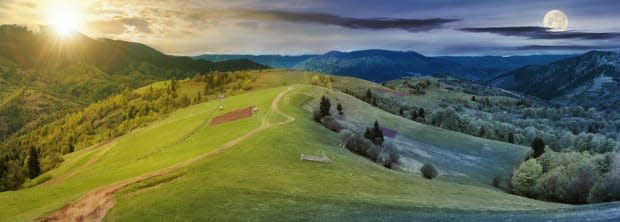Um, What Exactly Is the Spring Equinox and What Happens During It? (Asking for a Friend)
Everything you need to know about the beginning of springtime.
With the first day of spring taking place on Monday, March 20, 2023, many of us know it means warmer weather is coming, but realistically, that's about it. Sure, we know it's called the spring equinox, but what does that really even mean? What is an equinox? What happens during an equinox? And who even decides which day is the first day of spring?
If you don't know the answers to these questions, don't feel embarrassed. You're in good company. Anyone can celebrate the fact that warmer days are coming, but it takes a bit of Googling to find out what the equinox really is all about. Luckily for you, we did the work for you.
Here's everything you need to know about the spring equinox: what it is, what it means, and why we celebrate it.
What Is the Spring Equinox?

iStock
The spring equinox is considered the start of spring in the Northern Hemisphere. Also known as the March equinox or vernal equinox, what it means exactly is that the sun crosses over the line of the equator. With the sun traveling north, it marks the beginning of spring.
According to Merriam-Webster, the word "equinox" comes from the Latin words aequi, meaning "equal" and nox, meaning "night." Together, "equinox" means "equal night," which is precisely what the spring equinox is. In all areas throughout the world, both the length of daytime and nighttime are exactly equal.
Related: When is Daylight Savings Time?
When Is the Spring Equinox in 2023?
In 2023, the spring equinox—AKA the first day of spring—occurs on Monday, March 20. So, who decides that? It's not a groundhog and it's not a weatherman. This year, that's considered to be the first day of spring because it is the predicted date the sun will have crossed the equator—the first astronomical day of spring as per the Gregorian calendar.
Next year, the spring equinox will occur on Tuesday, 3/19 in 2024 as predicted by Almanac.com.
Related: 11 Spring Recipes to Welcome Warmer Days Because We Can’t With Winter Anymore
What Happens During the Spring Equinox?

iStock
As a result of the sun crossing the equator and being located more north in the sky, the Northern Hemisphere tilts more toward the sun. This creates more hours of daylight (think: Daylight Savings Time) and as you can guess, warmer temps.
Now, it's almost the polar opposite for the Southern Hemisphere. There, the March equinox means the beginning of fall. As the Northern Hemisphere tilts more to the sun, the Southern Hemisphere tilts away from it. Cue autumn, colder temperatures, and reduced hours of daylight for the Southern Hemisphere.
Related: 15 Cocktails to Welcome In Spring
Why Is Spring Equinox Celebrated?

iStock
The spring equinox, or vernal equinox, has been celebrated for centuries. Historically, the spring equinox has represented more than just the first day of spring or when the flowers begin to bloom. It has become a symbol for rebirth, fertility, and new beginnings.
According to History.com, different cultures have celebrated the spring equinox for different reasons and in different ways. In ancient Maya, Mexico, people publicly gather on the equinox to watch the sun make shadows against the Pyramid of Kukulcan or El Castillo. The shadows are said to resemble a large, moving snake that descends down the pyramid throughout the afternoon as the sun moves.
In Japan, the spring equinox has been celebrated as a national holiday since 1948. Called Vernal Equinox Day or Shunbun no Hi, the celebrations include a one-weeklong festival, Haru no Higan. People celebrate by cleaning their homes (to signify a new start or rebirth), visiting their childhood homes, and/or visiting and cleaning off the gravesites of their beloved departed.
Millions of people around the world celebrate the vernal equinox as a secular holiday known as Nowruz or the Iranian New Year or Persian New Year. The Persian New Year marks the first day of the month—known as Farvardin—on the Iranian calendar. Most often a 13-day celebration, people often celebrate by jumping over a bonfire or lighting fireworks.
In the U.S. there is no one-fits-all ritual, per se, that Americans rely on to celebrate the spring equinox. It has become more about enjoying the weather, spending time in nature, planting flowers or gardening, and even decorating Easter eggs to prepare for the upcoming holiday.
Next up, download these cleaning checklists to kick off spring cleaning.
